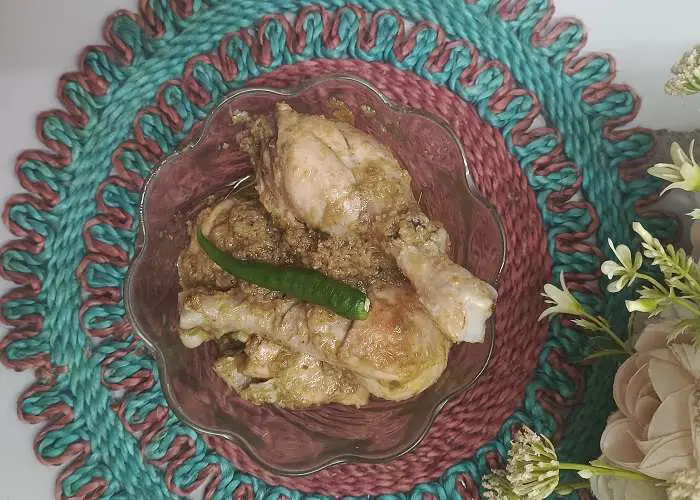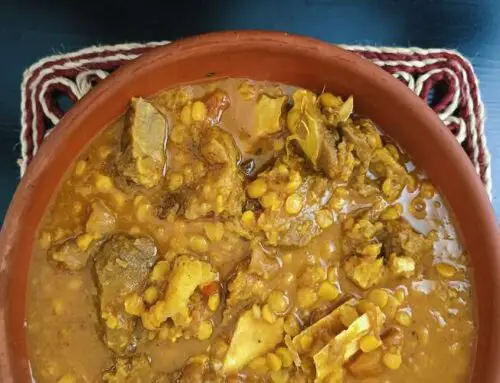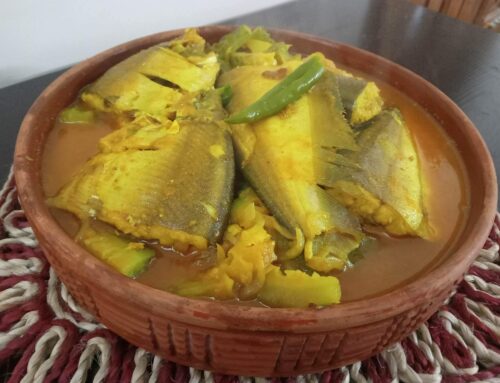Korma Recipe
Korma is a food almost synonymous with celebration in the Indian subcontinent. People living here say “let’s eat Polao-Korma for the occasion” rather than saying “let’s throw a party for the occasion.” So polao-korma go hand in hand with special events and if you smell polao-korma cooking, you know there is a banquet going on.
All this being said, before continuing further I should make it clear that Korma is not particularly popular in Bangladesh, and it is not something that one would usually associate with Bangladeshi cuisine. Korma is much more popular inside of India. But I am not quite sure about in which specific regions Korma is more popular, and the culture surrounding Korma. If anyone is knowledgeable on Korma in India, please share the stories with us.
 In Bangladesh, instead of Korma, Chicken Roast is the go to chicken curry to have with Polao. Korma has a difficult time taking Chicken Roast’s place in the menu of any event, be it a house party or a grand wedding event. But Moni Dadi chose to note down Korma, and not Roast. So Korma is what we will be making and talking about today. This does make me wonder though, did Moni Dadi prefer Korma over Roast? Or, was Korma much more popular during the 70s and 80s in Bangladesh? To find the answer for the first question we would need to ask a family member of Moni Dadi, something we might do in the future – but not today. So for now we’ll be in the dark on that matter. But if anyone knows about the popularity of Korma a few decades ago, then let me know through the comments.
In Bangladesh, instead of Korma, Chicken Roast is the go to chicken curry to have with Polao. Korma has a difficult time taking Chicken Roast’s place in the menu of any event, be it a house party or a grand wedding event. But Moni Dadi chose to note down Korma, and not Roast. So Korma is what we will be making and talking about today. This does make me wonder though, did Moni Dadi prefer Korma over Roast? Or, was Korma much more popular during the 70s and 80s in Bangladesh? To find the answer for the first question we would need to ask a family member of Moni Dadi, something we might do in the future – but not today. So for now we’ll be in the dark on that matter. But if anyone knows about the popularity of Korma a few decades ago, then let me know through the comments.
Since I am asking about Korma from the perspective of India and Bangladesh, you can probably guess that I do not know much about the dish itself. I am not sure if I have even tasted it before. The reason being Chicken Roast is much more popular and served, leaving little opportunities to eat Korma. But still the word Korma feels very similar because of the term “Polao-Korma”. Korma may not be in the plates, but it is present in the lips. So even if the dish is not something I resonate with, the word is something that feels close.
Naturally, I did look up Korma and found some interesting things. Korma originated in the Indian subcontinent, during the Mughal era. I always had a feeling that Korma was a dish for the emperors, and it was on point. The word Korma is derived from the Urdu word “qorma”. Qorma describes the dish perfectly – it means “to braise”. Korma is a dish where the chicken is braised in different fats and/or spices, so the name is an appropriate one.
You can see that I did not mention anything specific to braise the chicken with. That is because there is nothing specific. The recipe of Korma can vary widely. I looked up a few different recipes and almost every recipe had a different braising. The braising can be of spices, yogurt, nuts, seeds, or coconuts. Which braising you use will drastically change the taste of the Korma. Two Kormas with different braising may taste like completely different dishes – or so I have heard. Since I have never had different types of Korma, I cannot say for certain how they taste. But if you like the dish, I would recommend you try out different variants.
But I can give you some pointers I found through my research. You can make Korma using yogurt or curd (like our recipe), or using cream. Using yogurt or curd rather than cream results in a dish with less calories. You can use a mixture of both as well, but using half cream and half yogurt makes a dish with a lighter flavor than one with only cream. Marinating the chicken overnight makes a huge difference in flavor and texture of the meat.
Ingredients
- 1 cup onion paste
- 1 tsp garlic paste
- 1 tsp ginger paste
- 1 tsp garam masala
- ½ cup yoghurt
- 2 tbsp oil
- 500 gm Chicken meat
- 2 tbsp crispy fried onion
- 6-10 raisins
Instructions
- Firstly, in a pan pour some oil along with onion paste, garlic, ginger, garam masala , yogurt and stir it until the oil separates.
- Next add the meat and stir it properly
- Then add a bit of water and cook it until it boils.
- Lastly add crispy fried onions and raisins to it.
- Ready to serve.







